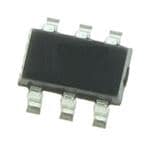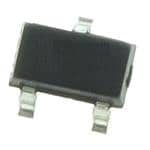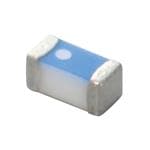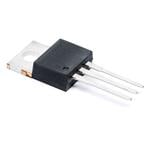
ISO7242CDW
| Manufacturer Part Number: ISO7242CDW | Manufacturer / Brand: Texas Instruments |
| Part of Description: Digital Isolators Quad Ch 2/2 25Mbps Dig Iso | Lead Free Status / RoHS Status:  Lead free / RoHS Compliant Lead free / RoHS Compliant |
| Ship From: HK/Shen Zhen | Shipment Way: DHL/Fedex/TNT/UPS |
| Datasheets: |
Product parameters
| Manufacturer | Texas Instruments |
| RoHS | Details |
| Operating Supply Voltage | 3.3 V to 5 V |
| Package / Case | SOIC-16 |
| Mounting Style | SMD/SMT |
| Series | ISO7242C |
| Packaging | Tube |
| Brand | Texas Instruments |
| Maximum Operating Temperature | + 125 C |
| Minimum Operating Temperature | – 40 C |
| Moisture Sensitive | Yes |
| Operating Supply Current | 10 mA |
| Product Type | Digital Isolators |
| Factory Pack Quantity | 40 |
| Unit Weight | 0.014829 oz |
| Number of Channels | 4 Channel |
| Supply Voltage – Min | 3.15 V |
| Supply Voltage – Max | 5.5 V |
| Propagation Delay Time | 50 ns |
Get in touch with us now
What is ISO7242CDW?
ISO7242CDW is a standard for high-speed digital networks. It covers the physical layer of networks, including the transmission of data, timing, and synchronization of devices. It was developed by the International Organization for Standardization (ISO) and is the most commonly used standard for digital networks.
ISO7242CDW is designed to ensure that digital networks are consistent and reliable. It provides specifications for physical layer functions, including the physical topology, transmission media, and cabling requirements. It also defines the way in which devices are connected to the network and how data is transmitted.
ISO7242CDW also outlines the performance characteristics of digital networks. It specifies the data rate, latency, and jitter that should be achieved when transmitting data. It also outlines the error rate and other factors that can affect the performance of the network.
ISO7242CDW is an important standard for the development of digital networks. It ensures that networks are consistent and reliable, which is essential for the successful development and deployment of digital systems.
How to use ISO7242CDW?
ISO7242CDW should be used to ensure the physical layer of a digital network is consistent and reliable. The standard should be used to define the physical topology, transmission media, and cabling requirements. It should also be used to define the performance characteristics of the network, including the data rate, latency, and jitter.
When designing a network, the standard should be referred to in order to ensure the network meets the performance and reliability requirements. Once the network has been designed, ISO7242CDW should be implemented in order to ensure the physical layer functions correctly.
ISO7242CDW is an important standard for the development of digital networks. It ensures that networks are consistent and reliable, which is essential for the successful development and deployment of digital systems.
Features and Specifications
ISO7242CDW defines the physical layer of networks, including the transmission of data, timing, and synchronization of devices. It also outlines the performance characteristics of digital networks, including the data rate, latency, and jitter. The standard also specifies the physical topology, transmission media, and cabling requirements.
The standard also includes various features and specifications, such as error correction, bit rate coding, and scrambling. It also defines the electrical characteristics of the network, such as voltage, output power, and signal-to-noise ratio.
Customer Reviews and Scores
ISO7242CDW is a widely used standard for digital networks, and it is well-liked by customers. The standard has been praised for its reliability and consistency, as well as its ability to ensure that networks meet performance and reliability requirements. Customers have also stated that the standard is easy to understand and implement.
Pros and Cons
The main advantage of ISO7242CDW is its reliability and consistency. The standard ensures that networks meet performance and reliability requirements and is easy to understand and implement.
The main disadvantage of ISO7242CDW is that it is not suitable for all types of networks. The standard does not cover all of the physical layer functions, and it is not always suitable for networks that require higher performance.
FAQ
Q: What is ISO7242CDW?
A: ISO7242CDW is a standard for high-speed digital networks. It covers the physical layer of networks, including the transmission of data, timing, and synchronization of devices.
Q: How is ISO7242CDW used?
A: ISO7242CDW should be used to ensure the physical layer of a digital network is consistent and reliable. The standard should be used to define the physical topology, transmission media, and cabling requirements. It should also be used to define the performance characteristics of the network, including the data rate, latency, and jitter.
Q: What are the features and specifications of ISO7242CDW?
A: ISO7242CDW defines the physical layer of networks, including the transmission of data, timing, and synchronization of devices. It also outlines the performance characteristics of digital networks, including the data rate, latency, and jitter. The standard also specifies the physical topology, transmission media, and cabling requirements. It also includes various features and specifications, such as error correction, bit rate coding, and scrambling.
Conclusion
ISO7242CDW is a widely used standard for digital networks. It ensures that networks are consistent and reliable, which is essential for the successful development and deployment of digital systems. The standard also provides specifications for physical layer functions, including the physical topology, transmission media, and cabling requirements. It also outlines the performance characteristics of digital networks, including the data rate, latency, and jitter.














